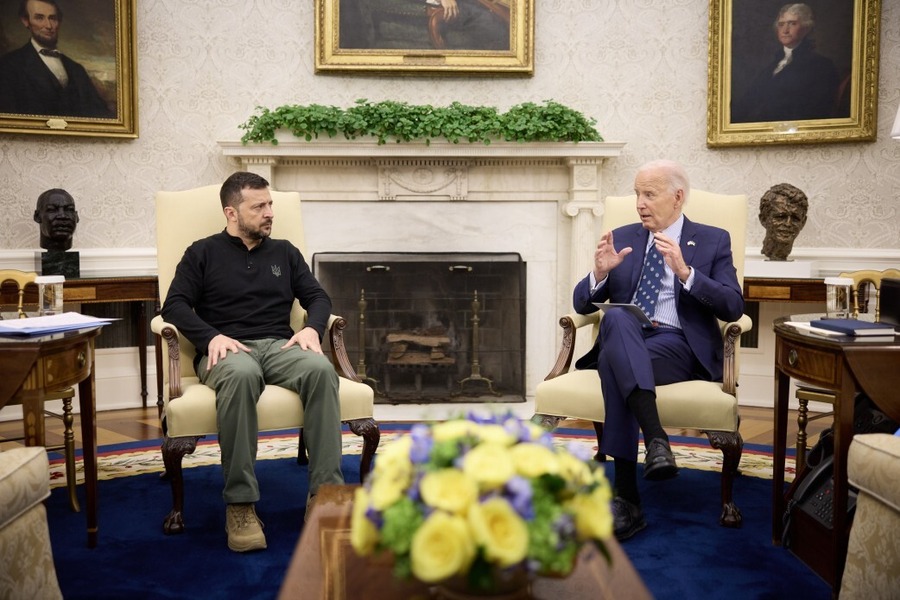Empty Wheel on Domestic Drones
Over at the Empty Wheel blog, The Estimable Ms.
Published by The Lawfare Institute
in Cooperation With

Over at the Empty Wheel blog, The Estimable Ms. Wheel critiques my critique of Friedersdorf and Krauthammer on domestic drones from earlier today--and she has a point which warrants a somewhat-mortified clarification from me.
In my post--responding to the silly suggestion made by Krauthammer and endorsed by Friedersdorf--of a ban on domestic drones, I argued that it is not right to think of this issue as one of weapons of war flying over the United States or to assume that because drones are armed in uses abroad that there is no place for domestic UAVs. I stand by that.
I rather garbled things, however, when I said that "the issue before the FAA right now is not the flying of 'instruments of war' over the United States. . . . We’re not talking here about standing armies or using the military domestically. We’re not even talking about weapons at all." What I should have said--what I meant--is that the issue before the FAA right now is not limited to military applications, that military drones domestically don't raise standing army concerns that other weapons domestically haven't raised for years, and that the truly novel issues we're facing don't involve drones as weapons at all. Rather, those issues involve civilian uses of UAVs for a range of non-military applications. My point was that one's fear of weaponized drones abroad should not cause one to oppose domestic use of UAVs.
The estimable Ms. Wheel (aka Marcy Wheeler) rightly points out that there actually is a military component of the FAA's work--something my bad wordsmithing served to obfuscate:
[Wittes] seems to be ignoring the other part of the section that requires FAA–with a 180 day deadline–to set up a program involving 6 test sites.My thanks to Marcy for calling me on wording that is, on its face, factually inaccurate and could easily lead the reader astray.(1) ESTABLISHMENT.—Not later than 180 days after the date of enactment of this Act, the Administrator shall establish a program to integrate unmanned aircraft systems into the national airspace system at 6 test ranges. [my emphasis]Which is curious, because this requirement specifically involves DOD and includes “public” drones, as well as civil ones.(C) coordinate with and leverage the resources of the National Aeronautics and Space Administration and the Department of Defense; (D) address both civil and public unmanned aircraft systems; [my emphasis]So the first thing that’s happening is the roll-out of these test sites including “public” (DOD, NASA, and DHS) drones, not the plan for the roll-out of “civil” drones. Not only that, but this requirement appears not just in the FAA reauthorization, but also–as Section 1097–in the Defense Authorization.SEC. 1097. UNMANNED AERIAL SYSTEMS AND NATIONAL AIRSPACE. (a) ESTABLISHMENT.—Not later than 180 days after the date of the enactment of this Act, the Administrator of the Federal Aviation Administration shall establish a program to integrate unmanned aircraft systems into the national airspace system at six test ranges. [snip] (3) coordinate with and leverage the resources of the Department of Defense and the National Aeronautics and Space Administration; (4) address both civil and public unmanned aircraft systems;Furthermore, the most public discussion of one of these test sites involves Reapers flown by the Air National Guard, though they would only be armed over Fort Drum.The Air National Guard’s 174th Fighter Wing is a step closer to gaining federal permission to fly unmanned Reaper drones out of its base at Hancock Field, according to U.S. Sen. Charles Schumer. The National Defense Authorization Act signed into law last week by President Barack Obama allows for the establishment of six national test sites where drones could fly through civil air space. The Air National Guard’s 174th Fighter Wing is a step closer to gaining federal permission to fly unmanned Reaper drones out of its base at Hancock Field, according to U.S. Sen. Charles Schumer. The National Defense Authorization Act signed into law last week by President Barack Obama allows for the establishment of six national test sites where drones could fly through civil air space. [snip] Hancock Field, which will eventually host a full squadron of Reaper drones, has the largest potential training space in the Northeast. Most of the drones assigned to the 174th Fighter Wing are now remotely operated in Afghanistan and Iraq by pilots at the Mattydale base. [snip] The drones would be armed with live ordnance only when used at firing ranges at Fort Drum near Watertown.Is Wittes really suggesting that these Reapers are “crop dusters” or “journalists”? More direct still is this 2010 DOD report (from which the map above derives) describing the urgency behind the operation of “public” drones in US airspace.Unmanned aircraft of the Department of Defense (DoD), Department of Homeland Security (DHS), and National Aeronautics and Space Administration (NASA) have a need for safe and routine access to U.S. airspace in order to execute a wide range of missions including surveillance and tracking operations, training, test and evaluation, and scientific data collection. UAS are already a significant part of DoD, DHS, and NASA operations and will eventually require U.S. National Airspace System (NAS) access similar to manned aircraft.Training, surveillance and tracking … that’s “crop dusters” too? In addition to “real world training” in US airspace, the report anticipates drones will conduct missions for NORTHCOM.The DoD needs to be able to respond rapidly to operational tasking, typically from a COCOM such as the United States Northern Command (NORTHCOM). Many of these tasked missions relate to homeland defense, homeland security, and defense support to civilian authorities. This includes border and port surveillance, maritime operations, counter-drug operations, and disaster or special event support.
Benjamin Wittes is editor in chief of Lawfare and a Senior Fellow in Governance Studies at the Brookings Institution. He is the author of several books.




.jpg?sfvrsn=8588c21_5)
